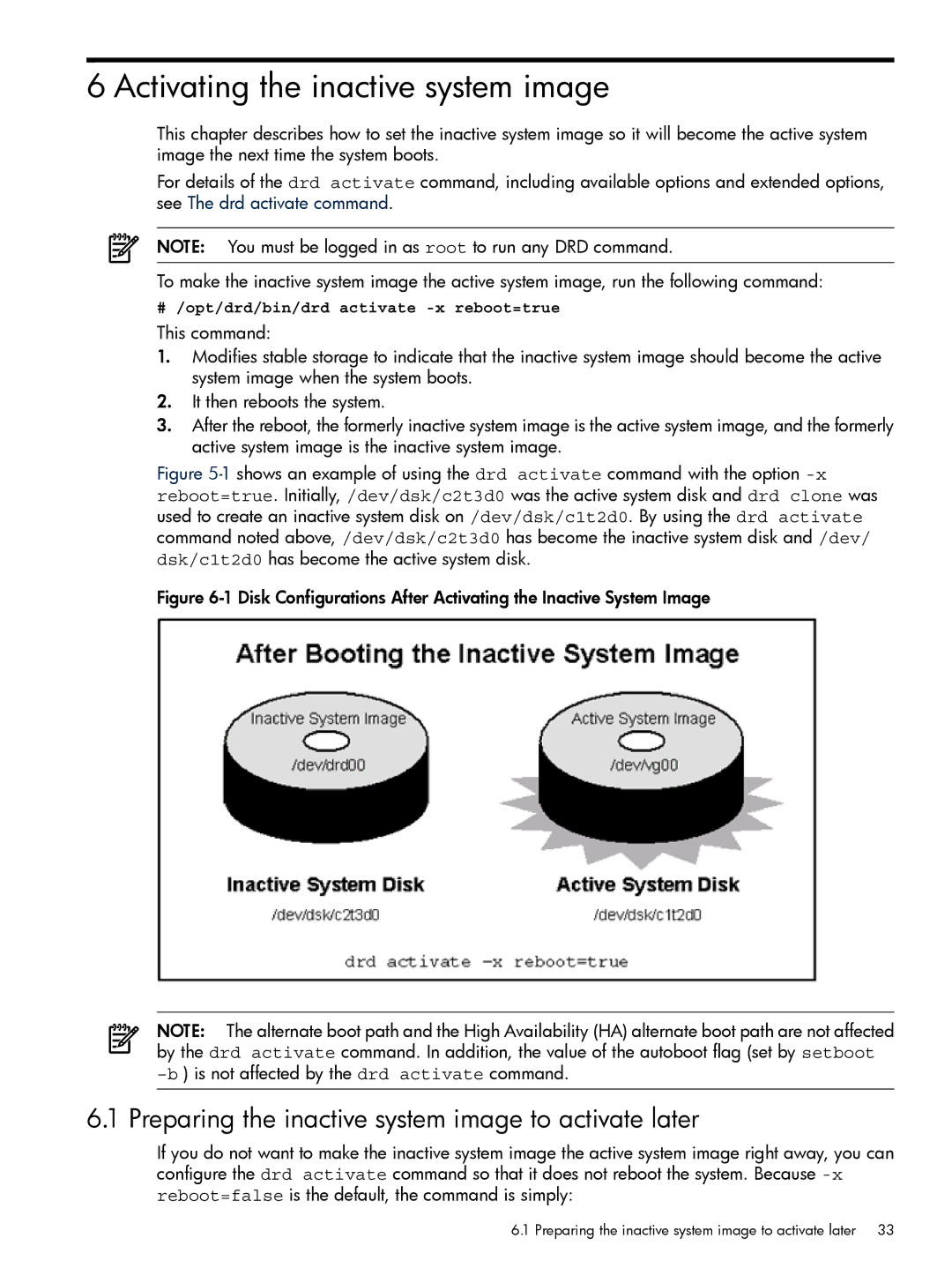
6 Activating the inactive system image
This chapter describes how to set the inactive system image so it will become the active system image the next time the system boots.
For details of the drd activate command, including available options and extended options, see The drd activate command.
NOTE: You must be logged in as root to run any DRD command.
To make the inactive system image the active system image, run the following command:
#/opt/drd/bin/drd activate
This command:
1.Modifies stable storage to indicate that the inactive system image should become the active system image when the system boots.
2.It then reboots the system.
3.After the reboot, the formerly inactive system image is the active system image, and the formerly active system image is the inactive system image.
Figure 5-1 shows an example of using the drd activate command with the option -x reboot=true. Initially, /dev/dsk/c2t3d0 was the active system disk and drd clone was used to create an inactive system disk on /dev/dsk/c1t2d0. By using the drd activate command noted above, /dev/dsk/c2t3d0 has become the inactive system disk and /dev/ dsk/c1t2d0 has become the active system disk.
Figure 6-1 Disk Configurations After Activating the Inactive System Image
NOTE: The alternate boot path and the High Availability (HA) alternate boot path are not affected by the drd activate command. In addition, the value of the autoboot flag (set by setboot
6.1 Preparing the inactive system image to activate later
If you do not want to make the inactive system image the active system image right away, you can configure the drd activate command so that it does not reboot the system. Because
6.1 Preparing the inactive system image to activate later 33
